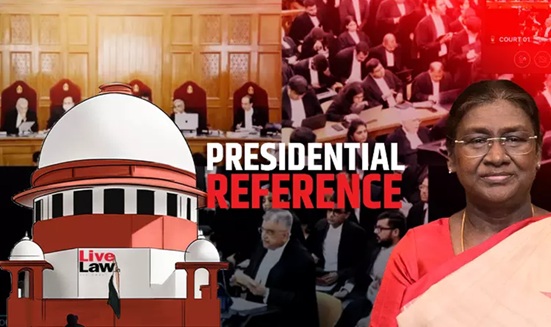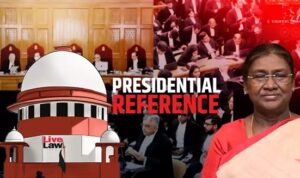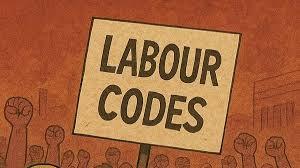1. Context
On 20 November 2025, the Supreme Court delivered its detailed opinion on 14 constitutional questions referred by the President under Article 143 (Presidential Reference).
The reference arose from constitutional conflicts surrounding the Tamil Nadu Governor’s prolonged inaction on several State Bills.
Some States criticized the reference as an “appeal in disguise” against the Supreme Court’s earlier April 2025 judgment, which had introduced the concept of ‘deemed assent’.
The Supreme Court rejected this argument and clarified the scope and nature of Presidential References.
2. Background of the Case
2.1 The April 8, 2025 SC Judgement
A two-judge bench addressed delays by Governors/President in granting assent to Bills.
The Court:
Stated that constitutional authorities must act within a reasonable time.
Introduced the doctrine of ‘deemed assent’ (automatic approval if no action within a reasonable time).
Central Government did not seek review, but instead sought Presidential Reference.
2.2 Reason for the Presidential Reference
To clarify:
Limits of Governor/President’s powers under Articles 200 & 201.
Whether the Court can prescribe a time limit.
Whether the doctrine of ‘deemed assent’ is constitutional.
Some States argued this was a back-door appeal of the Tamil Nadu case, which SC rejected.
3. Meaning of a Presidential Reference (Article 143)
The President can seek the Supreme Court’s advice on:
Questions of law
Constitutional interpretation
Matters of public importance
It is an advisory jurisdiction:
Not binding, but carries very high persuasive value.
Purpose: Resolve constitutional ambiguities and guide the government.
4. Key Findings of the Recent Supreme Court Opinion
4.1 Limits on Judicial Power
Court cannot:
Set time limits for Governors/President.
Interfere with pre-enactment decisions.
Introduce ‘deemed assent’.
4.2 Limits on Governor/President
Governor/President cannot remain inactive indefinitely.
In extreme cases of inaction, Court may issue a mandamus to ensure a decision is taken.
4.3 Impact of Article 143 Advice
Advice under Article 143 can, if necessary, influence or reshape earlier SC decisions.
4.4 Procedural Clarifications
Governor cannot be made a party to court proceedings (Article 361).
Decisions under Articles 200/201 are not subject to judicial review before the bill becomes law.
5. “Appeal in Disguise” Criticism
States’ Arguments
The reference was essentially:
An indirect appeal against the April 2025 ruling.
A misuse of Article 143 instead of a review or curative petition.
Supreme Court’s Response
Rejected the argument.
Cited precedents:
1978 Presidential Reference
2G Spectrum Presidential Reference
Held that:
Article 143 is a constitutional tool, not an appeal mechanism.
Its advice may overrule previous reasoning, but that still does not make it an appeal.
6. SC’s Answers to the 14 Questions of the Presidential Reference
Below is a clean, UPSC-ready pointwise summary:
Question 1: Constitutional options for Governor under Article 200
Answer:
He may:
Grant assent, OR
Withhold assent and return the Bill (if not a Money Bill), OR
Reserve the Bill for the President’s consideration.
Question 2: Is Governor bound by ministerial advice?
Answer:
Governor has discretion under Article 200.
Not fully bound by the Council of Ministers.
Question 3: Is Governor’s discretion under Article 200 justiciable?
Answer:
Generally not justiciable.
Exception: Court can order the Governor to take a decision (not what decision) if there is indefinite inaction.
Question 4: Does Article 361 bar judicial review of Governor’s actions?
Answer:
Complete bar on personal judicial proceedings against Governor.
Governor cannot be summoned or questioned personally.
Question 5: Can Court set a time limit for actions under Article 200?
Answer:
No. Constitution is silent → Court cannot prescribe a deadline.
Question 6: Is President’s discretion under Article 201 justiciable?
Answer:
Same principle as Governor: Not justiciable.
Question 7: Can President be bound by time limits for Article 201?
Answer:
No. Judiciary cannot set deadlines for President.
Question 8: Must President consult SC when a Bill is reserved?
Answer:
Not required.
President’s subjective satisfaction is enough.
Question 9: Are decisions under Articles 200/201 justiciable before enactment?
Answer:
No.
Court cannot examine pre-enactment stages. Only post-enactment judicial review.
Question 10: Can Article 142 substitute constitutional powers or create ‘deemed assent’?
Answer:
No.
Article 142 cannot override constitutional procedures.
‘Deemed assent’ is unconstitutional.
Question 11: Can State laws operate without Governor’s assent?
Answer:
Impossible.
No law can take effect without assent under Article 200.
Question 12: Must Courts first decide whether a case needs a Constitution Bench (Art 145(3))?
Answer:
Returned unanswered—irrelevant to the reference.
Question 13: Are SC’s powers under Article 142 limited to procedural matters?
Answer:
No definite answer.
Already addressed partly in Q.10.
Question 14: Does the Constitution bar SC from resolving Centre–State disputes through means other than Article 131?
Answer:
Irrelevant to the reference → unanswered.
7. Significance of the Judgment (UPSC-Important)
7.1 Strengthening Federalism
Clarifies boundaries of Governor/President in the lawmaking process.
Prevents misuse of constitutional offices.
7.2 Greater Constitutional Clarity
Offers a detailed interpretation of Articles 143, 200, 201, 361, 142.
Removes ambiguity on:
Assent process
Pre-enactment judicial review
‘Deemed assent’
7.3 Democratic Governance Strengthened
Court condemns prolonged inaction, promoting accountability.
Mandamus option ensures timely decisions.
7.4 Centre–State Relations
States now know:
When they can seek judicial remedy.
What powers Governors actually have.
That assents cannot be delayed indefinitely.
7.5 Judicial Review Clarified
Courts stay out of pre-legislative stages.
Ensures proper separation of powers.
8. Why This is Important for UPSC (Prelims + Mains)
Prelims
Articles 143, 200, 201, 361, 142
Presidential Reference
Powers of Governor/President
Judicial Review limits
Mains (GS-II)
Federalism
Separation of Powers
Role of Governor
Constitutional morality
Judicial activism vs restraint
Essay
Cooperative federalism
Constitutional design and functioning







